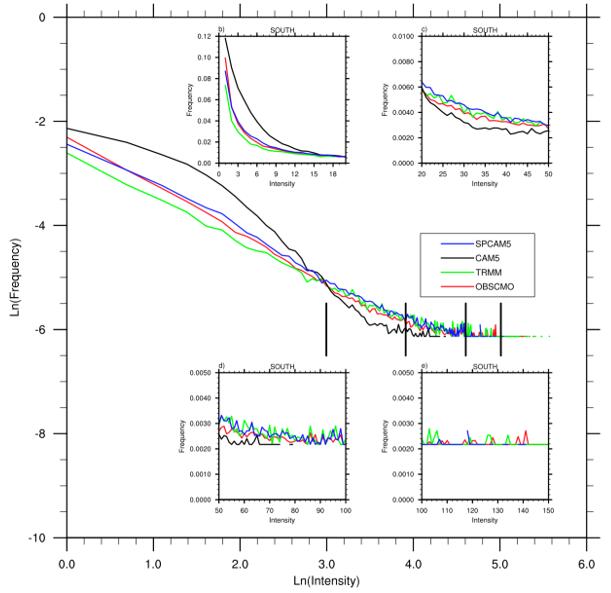An adequate simulation of precipitation over East Asia (EA) is a long-standing problem in the field of numerical model research. Almost all General Circulation Models (GCMs) produce systematic precipitation biases over EA. This limits the model capability in predicting, simulating and projecting weather and climate. The limited understanding of precipitation systematic errors is a roadblock that hinders the model improvement. Conventional studies on the relations between large-scale controls and precipitation can hardly point out the systematic problems concealed in the model physics.
From a brand new perspective, Dr. ZHANG Yi and Dr. CHEN Haoming, both receiving PhD degrees from the Institute of Atmospheric Physics and now working at Chinese Academy of Meteorological Sciences, thoroughly analyzed the errors and influencing factors associated with EA precipitation by comparing two fundamentally different GCMs: CAM5 and Super Parameterized CAM5. Their studies show that the underestimated mean precipitation amount, the erroneous precipitation structure characterized by higher-frequency, lower-intensity, and the earlier occurrence of precipitation peak (all are common biases of GCMs), are intimately connected. The key reason lies in that conventional GCMs cannot well simulate the progressive stage of convection development, more specifically, the transition from shallow to deep convection. This problem forces the model to quickly release the unstable energy when the surface is heated, thus the precipitation peak quickly occurs and the precipitation intensity is unable to grow to a higher magnitude. This problem is effectively alleviated by Super Parameterized CAM5, which possesses an inherent Multiscale Modelling capability.

Fig. 1 Precipitation frequency-intensity curves in models (CAM5, SPCAM5) and observations (TRMM, OBSCMO).
This study is published in Journal of Climate, and is highlighted by the Center for Multiscale Modeling of Atmospheric Processes (CMMAP) as a latest research advance for the Multiscale Modeling Framework in 2016. CMMAP is an American top academic organization which focuses on the Multiscale Modeling of atmosphere, and is the founder of Journal of Advances in Modeling Earth System.
Paper link: http://journals.ametsoc.org/doi/abs/10.1175/JCLI-D-15-0342.1
Contact: Dr. ZHANG Yi, zhangyi@lasg.iap.ac.cn
